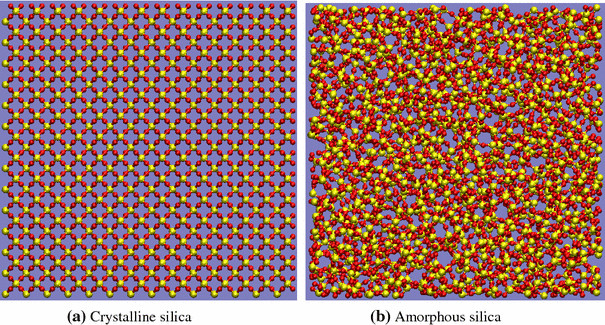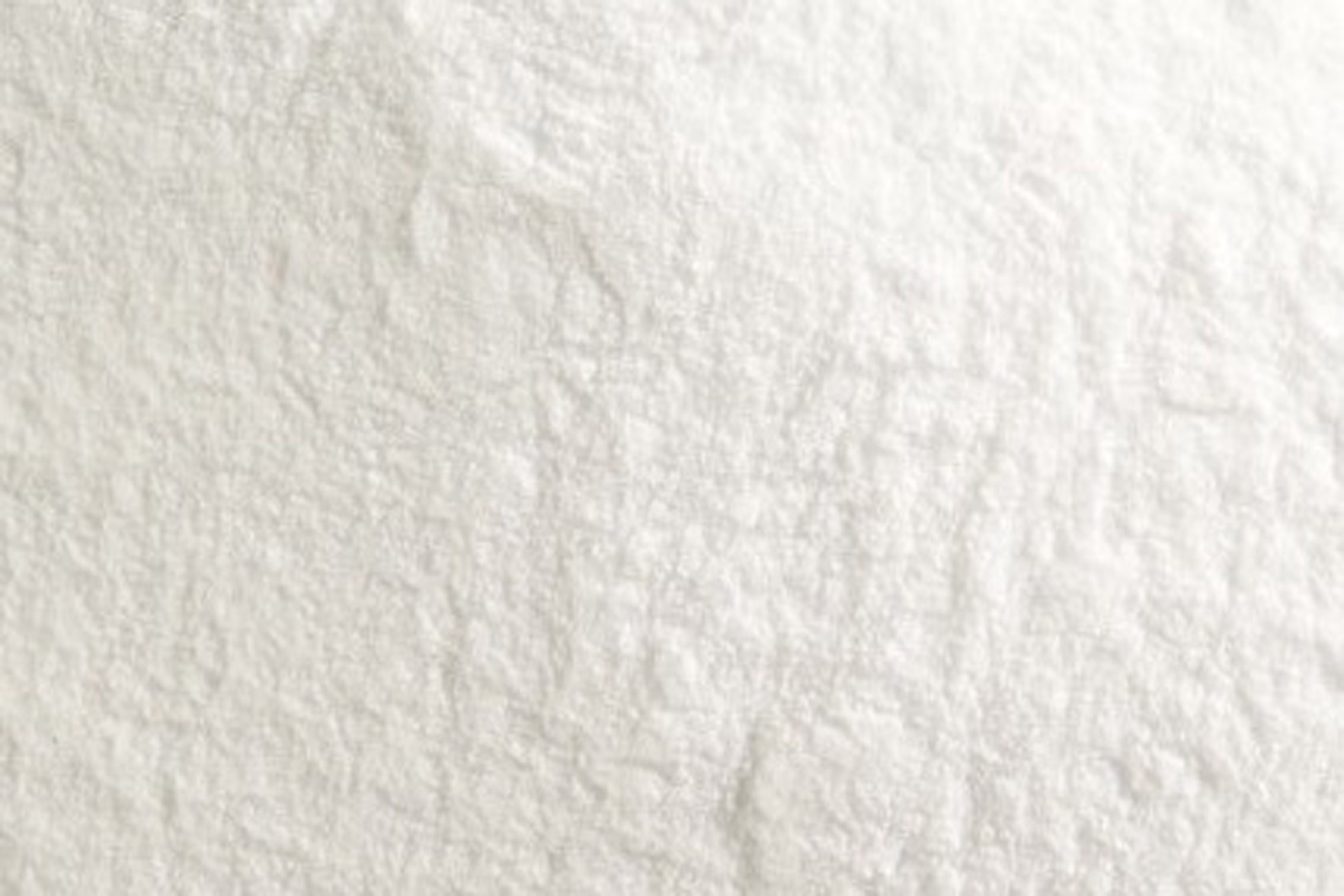Is Glass Dust Safe?
We enjoy a fascinating subject matter here at Krysteline. One that interests us greatly is the difference between Crystalline Silica (also known as “free silica”) and Amorphous Silica. Unfortunately, over time people have confused crystalline silica with amorphous silica, however, one is dangerous and the other is not.
Glass is manufactured using sand, otherwise known by its chemical name “silica dioxide”, however due to the heating and rapid cooling techniques used in the creation of glass, both glass and glass dust are examples of amorphous silica and therefore is relatively harmless.
The dust formed from crystalline silica is often referred to as “silica dust” and thus the confusion as to the hazardousness of glass dust arises.
To help avoid future confusion we would like to take this moment to clarify the difference between crystalline silica and amorphous silica.
 Cellular structure of Crystalline Silica vs Amorphus Silica
Cellular structure of Crystalline Silica vs Amorphus Silica
Crystalline silica is a natural substance found in stone, metals, quartz, rocks, sand, and clay, as well as products like bricks, tiles, cement, concrete and other construction materials. When these materials are worked on, for example by milling, cutting or drilling, Respirable Crystalline Silica (RCS) is released as a very fine dust. The inhalation of which is hazardous and well documented to cause silicosis and myriad respiratory disorders. Crystalline silica when inhaled is classified as carcinogenic to any animal or human by The World Health Organization.
Crystalline silica occurs naturally during the cooling process of silicon dioxide (SiO2) from its melting point at a regular steady pace, causing the molecules to align in a very even and organised manner. The resulting solid comprises tetrahedral SiO4 units linked together with geometrically arranged plane faces.
Amorphous silica occurs when molten silicon dioxide (SiO2) is rapidly cooled, causing the molecules to have no alignment or arrangement and therefore it does not crystallize, but solidifies as a glass.
The dust created from cutting or milling of glass is not carcinogenic when inhaled but excessive inhalation over long periods of time can lead to breathing problems such as asthma. Over the course of a few weeks our bodies will slowly remove the amorphous silica.
Amorphous silica is considered by many governing bodies to be safe to humans and is even used in the beauty industry as well as in medicinal practices, it can even be found in certain toothpastes and food and drink.
You may be wondering why sitting on a sandy beach on a windy day doesn’t cause respiratory problems as sand is a form of crystalline silica? This is because the particles in sand are too big to be inhaled deep into your lungs (and on into your blood stream) and generally won’t go much further than your nose or upper airways. As mentioned previously respirable crystalline silica is in the form of a very fine dust.
 Example of powdered glass
Example of powdered glass
The process of transforming waste glass into cullet to be recycled into new glass products creates glass dust, which as we have clarified is amorphous silica, as glass goes through our Imploders glass dust is created. This dust can be collected with a dust filtration system and discharged into a top fill sealable lined bulk bag, this collected glass dust / powder is another commodity (in addition to the cullet produced) and can be sold for uses in ceramics, binding, glass fusing, decorative glass or as an aggregate in cement.
To find out more about how you can maximise your output by collecting glass dust please contact us.